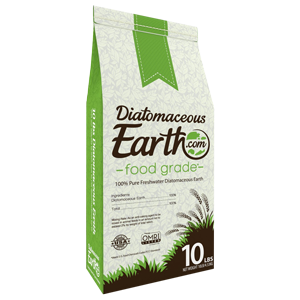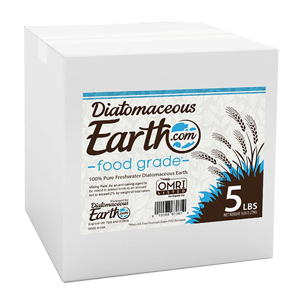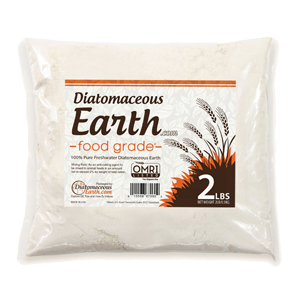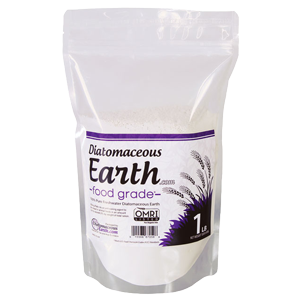Flea eggs, larvae and pupae make up over 95% of a flea infestation. These developing stages live in carpets, and to a lesser extent in cracks of hardwood floors. The highest concentration of immature fleas will be found in rooms where pets rest.
When fleas come in contact with diatomaceous earth, their waxy cuticle coating is absorbed. As a result, the fleas cannot contain water and will die from desiccation (water loss).
 |
 |
 |
 |
|
| Product Name | Diatomaceous Earth | Diatomaceous Earth | Diatomaceous Earth | Diatomaceous Earth |
| Price | $22 | $20 | $11 | $11 |
| Size | 10 pounds | 5 pounds | 2 pounds | 1 pounds |
| Price per Pound | $2.2 | $4 | $5.5 | $11 |
| Application | Powder | Powder | Powder | Powder |
| Use On | Carpets | Carpets | Carpets | Carpets |
| Kills | Larvae Adults |
Larvae Adults |
Larvae Adults |
Larvae Adults |
| MSDS | ||||
| FleaScore | ||||
| Reviews |
- Prices are approximations based off of Amazon.com prices at the time of publishing.
- FleaScores are based off of product details (price, size, active ingredients, etc), as well as reviews aggregated from 3rd party sources.
Summary
Details
What is Diatomaceous Earth?
Diatomaceous earth is obtained from deposits of diatomite. Diatomite is fossilized sedimentary layers of microscopic phytoplankton called diatoms. These diatoms originate over 20 million years ago from lakes and seas in Miocene period. Diatoms ingested dissolved silica and converted it into a hard shell. When North America was developing, the continent was full of these diatoms. Many of these fossilized prehistoric seawater diatoms are now mined in California, while the freshwater species are mined in California, Oregon, Nevada, and Arizona.
Freshwater fossilized diatoms are easier to apply without clumping or caking compared to seawater species. Though the effectiveness of seawater vs freshwater is still being debated. Any diatomaceous earth that has a large oil absorption capacity is a candidate for use as an insecticide.
When diatomaceous earth is used as an insecticide, it should ideally be highly pure amorphous silica and a uniformly small particle size (less then 10/u). It should contain very little clay and less than 1% crystalline silica. The diatomite should be properly milled and ground and the diatoms should be well-separated and physically intact if possible. Any product registered with the EPA has to meet the proper standards.
It is easier to find freshwater diatomaceous earth because it is easier to obtain from freshwater fossils. Marine diatomite is calcined, meaning it is turned to glass at high temperatures in order to improve filtration characteristics. This calcined diatomaceous earth is often sold for swimming pool filters. This type of diatomaceous earth is not useful as an insecticide. When high temperatures (800 C) which calcinate the diatoms also converts the amorphous silica into crystalline silica and it loses its absorption power. Swimming pool diatomaceous earth can contain up to 60% of this crystalline silica. In addition to the poor insecticide properties of this calcined DE, it is also more harmful when inhaled. It can cause the deadly diseases silicosis or other respiratory problems.
History
Diatomaceous earth was improved in 1976 with the invention of Dryacide®. The surface area of the silica was increased by gluing silica gel to it. Trials of Dryacide for wheat protection are discussed later. Another improved material is Shell-shock® invented by Dorsey Dunlap and tested by Robert Snetsinger at the University of Pennsylvania. Shellshock is diatomaceous earth covered with an adhesive that is formulated for control of insects such as cockroaches and ants. Once an insect comes into contact with Shellshock, it is unable to easily remove it. Lipids and fats are drained from the cuticle, and the insect dies from desiccation.
Efficacy
Mode of Action
Diatomaceous earth and silica gel are both forms of amorphous silica. They both kill insects through desiccation. They don’t absorb water, but instead the oily or waxy outer cuticle layer through direct contact. When the insect loses this waterproof layer of the epicuticle, it begins to lose water and then dies. The material can also cause damage to the cuticle, but the effectiveness of DE is most dependent on the amount of oil it can absorb.
The amount of oil the DE can absorb is often related to the surface area of the silica. Silica gel is more absorbent than DE, but DE is more abrasive. Which one to use depends on circumstances and the target insect.
Toxicity
Diatomaceous earth is used as non-toxic insecticide. It is used to control pests in the home and garden. Many organic gardens and homeowners prefer to use it because it does not contain any poisons like other insecticides.


